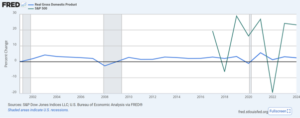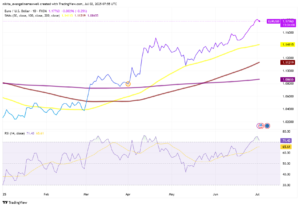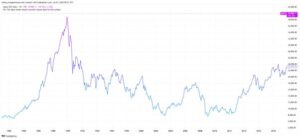Next week, the Federal Reserve is expected to announce an interest rate cut, and this news has created a lot of excitement in the market. According to economists, the Fed will likely gradually reduce rates over the next few meetings, with a 25-basis-point cut each time. While some people are hoping for a bigger cut (like 50 basis points), most experts believe the Fed will take a cautious approach, lowering rates slowly instead of making drastic changes all at once.
Why is this rate cut so important? Interest rates directly impact economic growth, inflation, and the job market. In simple terms, the lower the interest rate, the cheaper it is to borrow money. This encourages consumers and businesses to spend more, which can help the economy recover more quickly.
The latest surveys show that most experts expect the Fed to continue cutting rates over the next few years. By the end of 2024, rates could drop to between 3.5% and 3.75%. By the end of 2026, they might fall even further, to 2.75% to 3%.
Recent data on non-farm payrolls, inflation (CPI and PPI), and the labor market has sparked quite a bit of debate. Some people think a 25-basis-point cut is sufficient, while others believe a 50-basis-point cut is needed to give the U.S. economy a stronger boost. However, most market participants support the idea of a gradual, steady 25-basis-point rate cut strategy.
Impact on the Labor Market
Besides interest rates, the labor market is also a key focus. Recently, the unemployment rate has risen, and hiring has slowed down, which has raised concerns about the economy. Most economists expect the unemployment rate to increase from 4% to 4.3% this year, and it could continue to rise. However, despite some weakness in the job market, more than three-quarters of experts still believe the U.S. economy will continue to grow over the next 12 months.
Gradual vs. Aggressive Rate Cuts
There are differing opinions on the pace of rate cuts. Some believe the Fed should take things slowly, cutting rates by 25 basis points at each meeting. Others feel that larger, more aggressive rate cuts over a few meetings would help the economy recover faster.
That said, most people believe the Fed will opt for a gradual rate cut rather than an aggressive one. This cautious approach means they prefer to observe economic data and make adjustments slowly, rather than making big changes all at once.
Market Expectations
Right now, the market has high expectations for the Fed’s next move. Some believe that if the Fed takes a gradual approach, the market will remain more stable, and stock prices could stay steady. On the other hand, if the Fed takes bolder action, such as a 50-basis-point cut, there could be more market volatility.
In general, the Fed's decisions, both on the rate cut and its future plans, will have a significant impact on the market. Investors and market participants are eagerly waiting for the September 17 meeting to see what strategy the Fed will take. Whatever the outcome, this meeting will play a crucial role in shaping the economy for the next few years.
Conclusion
For those new to the financial markets, understanding the Fed’s rate decisions is a great way to start learning. Changes in interest rates affect borrowing costs, savings returns, and overall economic direction. By paying attention to these macroeconomic policies, you can gain a better understanding of market movements and make more informed investment decisions.
Whether the Fed opts for gradual or aggressive rate cuts, each decision will have the potential to shape economic development and market trends. As a beginner, you can learn how to interpret market reactions to major events like this, seize opportunities, and avoid potential risks.





